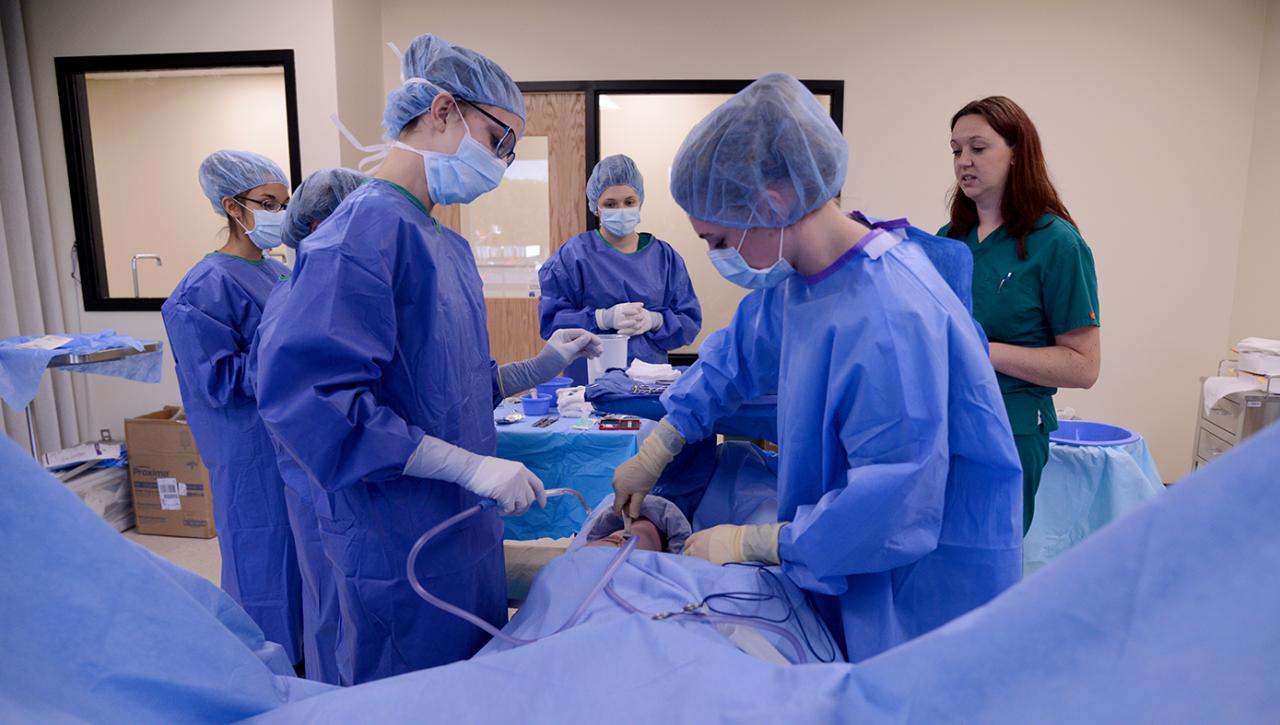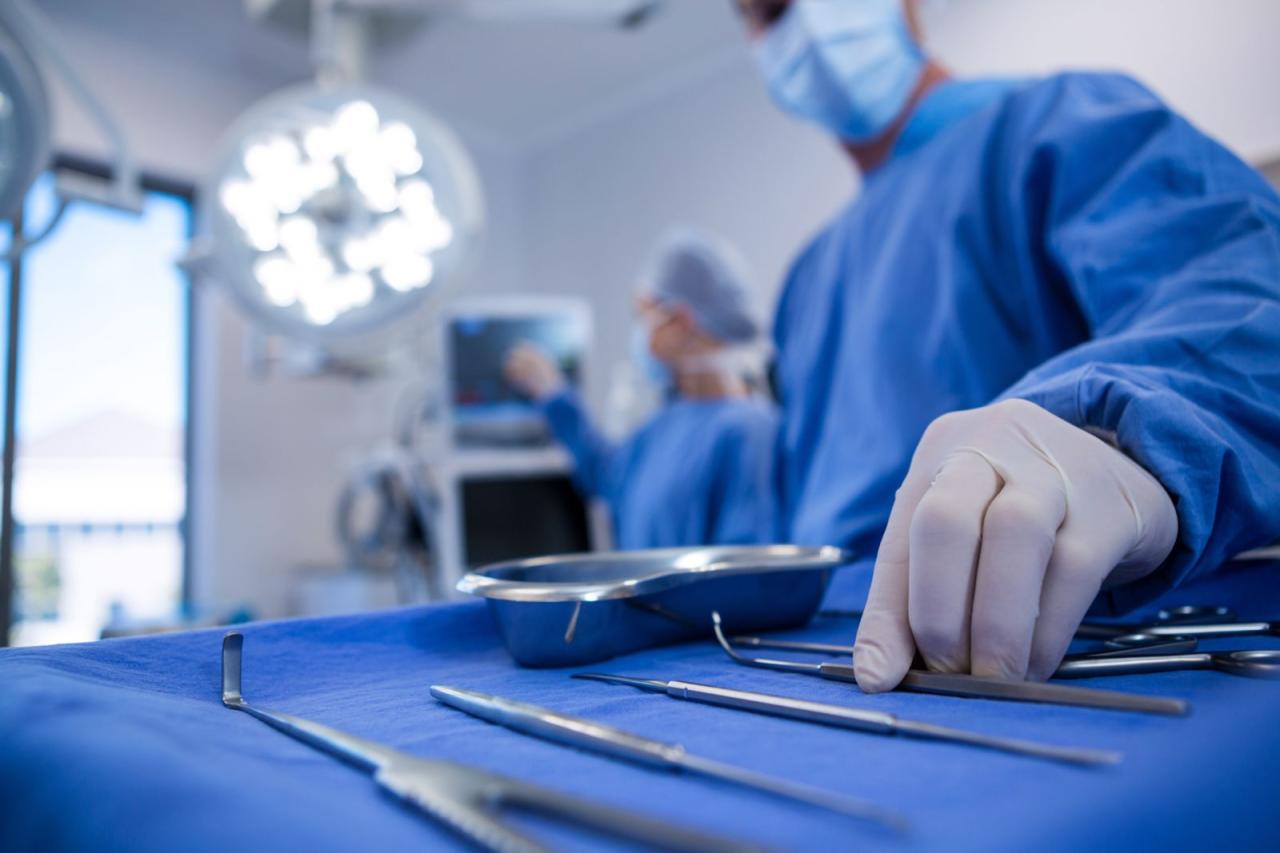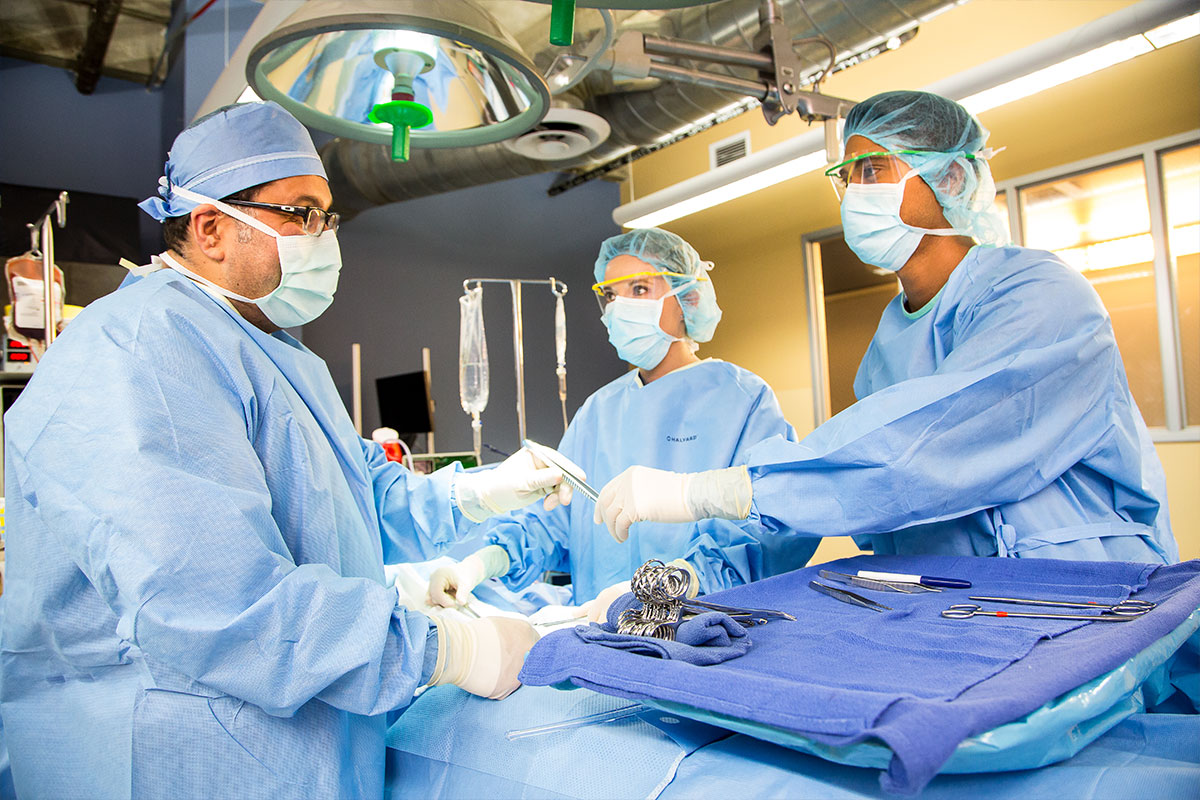Accredited surgical tech programs near me with clinical rotations offer a fantastic pathway to a rewarding career. Finding the right program requires careful research, understanding accreditation standards, and recognizing the crucial role of hands-on clinical experience. This guide will help you navigate the process, from identifying reputable programs to securing the best clinical rotations to maximize your learning and career prospects.
We’ll cover key aspects like accreditation bodies, program curriculum, clinical rotation types, job outlook, and financial aid options. By the end, you’ll be well-equipped to make informed decisions about your surgical technology education and launch a successful career.
Finding accredited surgical tech programs near you with clinical rotations is key to a successful career. It’s a demanding field, requiring dedication, much like the excitement surrounding Rivian’s stock surge, as you can see from this article: Rivian stock has its best day ever after EV maker reports 2024. So, research programs carefully; hands-on experience during rotations is invaluable for your future as a surgical tech.
Understanding Accreditation Bodies for Surgical Technology Programs: Accredited Surgical Tech Programs Near Me With Clinical Rotations

Choosing an accredited surgical technology program is crucial for your career success. Accreditation ensures the program meets nationally recognized standards for quality education and prepares graduates for the surgical technology field. Several organizations provide accreditation, each with its own specific criteria. Understanding these differences is key to making an informed decision.
Nationally Recognized Accrediting Agencies
Several agencies accredit surgical technology programs in the US. Their standards vary, impacting the quality and rigor of the education you receive. Here’s a table summarizing some key accrediting agencies:
| Agency Name | Accreditation Type | Website URL | Contact Information |
|---|---|---|---|
| Commission on Accreditation of Allied Health Education Programs (CAAHEP) | National Accreditation | www.caahep.org | Contact information available on their website. |
| Accreditation Review Council on Education in Surgical Technology and Surgical Assisting (ARC/STSA) | National Accreditation | www.arc-sts.org | Contact information available on their website. |
| (Example – Add another agency if needed, following the same format) | (Accreditation Type) | (Website URL) | (Contact Information) |
Comparison of Accreditation Standards
While both CAAHEP and ARC/STSA accredit surgical technology programs, their specific standards might differ slightly. For instance, CAAHEP might place more emphasis on certain aspects of curriculum development, while ARC/STSA might focus more on clinical experience requirements. Detailed comparison requires reviewing each agency’s specific standards documents available on their respective websites. It’s important to note that both agencies maintain high standards, ensuring graduates are well-prepared for the profession.
Importance of Program Accreditation
Accreditation signifies that a program has met rigorous standards for curriculum, faculty qualifications, facilities, and clinical experiences. For prospective students, this translates to several key benefits: increased chances of licensure and certification, enhanced job prospects, and a higher quality education. Employers often prioritize graduates from accredited programs, recognizing the assurance of quality and competence.
Locating Accredited Programs
Finding an accredited surgical technology program near you requires a strategic approach. This involves utilizing specific search terms and filtering criteria to narrow down your options efficiently.
Finding accredited surgical tech programs near you with clinical rotations is key to a successful career. It’s all about hands-on experience, and while you’re searching, did you hear that Real Madrid become first team to reach 5000 LaLiga points ? That’s impressive teamwork! Anyway, back to your future in surgical technology – make sure those rotations are a solid part of your program selection.
Search Strategy for Accredited Programs
To locate programs within a 50-mile radius of your location, use a combination of online search engines and specialized directories. Start by defining your location and specifying “accredited surgical technology programs” along with your location. Refine your search by adding terms like “CAAHEP accredited” or “ARC/STSA accredited” to ensure you only find accredited programs. You can also use mapping tools to visualize the programs within your desired radius.
Resources for Locating Accredited Programs
- CAAHEP and ARC/STSA websites: These websites often have program search tools.
- Online search engines (Google, Bing, etc.): Use precise search terms like “CAAHEP accredited surgical technology programs near me.”
- Professional organizations (e.g., Association of Surgical Technologists): These organizations may offer program directories.
- Educational websites (e.g., Peterson’s, US News & World Report): These often list allied health programs.
Examples of Effective Search Queries
- “CAAHEP accredited surgical technology programs within 50 miles of [Your City, State]”
- “ARC/STSA accredited surgical technology schools near [Your Zip Code]”
- “Surgical technology programs [Your State] accreditation”
Clinical Rotations: Types and Importance

Clinical rotations are an integral part of surgical technology education. They provide hands-on experience in various surgical settings, allowing students to apply their classroom knowledge and develop essential practical skills.
Types of Clinical Rotations

Accredited programs typically include rotations in a variety of surgical specialties and settings. These may include general surgery, orthopedics, cardiovascular surgery, neurosurgery, and others. The specific rotations offered can vary between programs.
Role of Clinical Rotations in Skill Development
Clinical rotations are crucial for developing proficiency in sterile technique, instrument handling, surgical assisting, and patient care. Students gain experience working alongside experienced surgical technologists, learning best practices and problem-solving skills in real-world scenarios. The hands-on experience bridges the gap between theoretical knowledge and practical application.
Benefits of Rotations in Different Specialties
Exposure to diverse surgical specialties broadens a student’s skillset and adaptability. Each specialty presents unique challenges and procedures, enhancing a graduate’s versatility and marketability. For example, experience in orthopedics develops expertise in bone surgery, while cardiovascular surgery experience enhances skills in managing complex circulatory systems.
Comparison of Clinical Rotation Experiences
| Setting | Duration | Typical Procedures | Skills Developed |
|---|---|---|---|
| Hospital | Variable (e.g., 8-12 weeks) | Wide range of surgical procedures | Comprehensive surgical skills, teamwork, emergency response |
| Outpatient Clinic | Shorter duration (e.g., 4-6 weeks) | Less complex procedures | Efficiency, patient interaction, pre- and post-operative care |
| Specialized Surgical Center | Variable | Procedures specific to the center’s focus (e.g., ophthalmology, endoscopy) | Specialized skills within a particular surgical area |
Program Curriculum and Structure
Accredited surgical technology programs share a common core curriculum, but the structure and emphasis can vary. Understanding these differences is important when selecting a program.
Common Core Curriculum Components
Most programs include foundational courses in anatomy and physiology, microbiology, medical terminology, surgical instrumentation, sterile technique, and surgical assisting. They also incorporate clinical rotations and potentially courses on patient care, surgical technology ethics, and professional development.
Curriculum Structure Comparison
Program A might emphasize a more integrated approach, blending theory and practice throughout the curriculum. Program B might have a more modular structure, with distinct blocks of theoretical and clinical instruction. The best approach depends on individual learning styles and preferences.
Sample Curriculum, Accredited surgical tech programs near me with clinical rotations
A typical program might follow a sequence like this (this is a sample and can vary):
- Semester 1: Anatomy & Physiology, Microbiology, Medical Terminology
- Semester 2: Surgical Instrumentation, Sterile Technique, Introduction to Surgical Assisting
- Semester 3: Advanced Surgical Assisting, Clinical Rotations (e.g., General Surgery)
- Semester 4: Clinical Rotations (e.g., Orthopedics, Cardiovascular Surgery), Elective Courses, Professional Development
Career Outlook and Job Placement
Graduates of accredited surgical technology programs enjoy strong employment prospects. Understanding salary expectations and career paths is crucial for planning your future.
Employment Rates and Salary Expectations
The Bureau of Labor Statistics provides data on employment trends and salary information for surgical technologists. Salaries vary based on experience, location, and employer. While specific numbers fluctuate, the field generally offers competitive salaries and consistent job growth.
Potential Career Paths
Surgical technologists can pursue various career paths, including specializing in specific surgical areas, advancing to supervisory roles, or pursuing further education in related fields. Some may choose to become surgical assistants or pursue management positions within healthcare facilities.
Role of Program Career Services
Many accredited programs offer career services to assist graduates with job placement. These services may include resume and cover letter assistance, interview preparation, job search workshops, and networking opportunities with potential employers.
Creating a Compelling Resume and Cover Letter
A well-crafted resume and cover letter highlight relevant skills and experiences. Quantify achievements whenever possible and tailor your application to each specific job posting. Emphasize your training in an accredited program and any relevant certifications.
Program Costs and Financial Aid
The cost of a surgical technology program varies depending on the institution and program length. Understanding the costs and available financial aid options is vital for planning your education.
Typical Program Costs
Tuition, fees, books, and supplies contribute to the overall cost. Contact individual programs for specific cost breakdowns. Consider the total cost of attendance, including living expenses, when budgeting.
Finding accredited surgical tech programs near you with clinical rotations is key to a successful career. It’s all about hands-on experience, and you’ll learn so much faster that way. While you’re researching, take a moment to check out this important article: Putting a cancer warning on alcohol is overdue, doctors say — it highlights the importance of health awareness.
Getting back to surgical tech programs, remember to look for programs with strong hospital partnerships for optimal clinical rotations.
Financial Aid Options
Various financial aid options exist, including federal student loans, grants, scholarships, and institutional aid. Explore federal aid resources like FAFSA (Free Application for Federal Student Aid) and check with individual programs for scholarship opportunities.
Applying for Financial Aid
The application process typically involves completing the FAFSA form and applying for scholarships and grants through the program or external organizations. Meet with a financial aid advisor at your chosen program to discuss your options.
Illustrative Examples of Program Features
Well-equipped surgical technology programs offer state-of-the-art training facilities to prepare students for real-world surgical environments.
Training Lab Facilities and Equipment
A well-equipped lab includes a variety of surgical instruments, representing those used in different surgical specialties. Simulation equipment allows students to practice procedures in a safe and controlled environment. Operating room models provide realistic training environments, mimicking the layout and workflow of a real operating room. Advanced simulation technologies, such as virtual reality training, might also be available in some programs.
A Typical Day in the Life of a Surgical Technology Student
- Morning: Classroom lecture on surgical anatomy and physiology.
- Mid-day: Lab session practicing sterile technique and instrument handling.
- Afternoon: Clinical rotation observing and assisting in surgical procedures.
- Evening: Review of the day’s learning and preparation for the next day’s activities.
Closure
Landing a spot in a top-notch accredited surgical tech program with robust clinical rotations is a significant step toward a fulfilling career. Remember to thoroughly research programs, focusing on accreditation, clinical experiences offered, and career services. With dedication and the right preparation, you can confidently pursue this exciting and in-demand profession.
FAQ Corner
What is the average length of a surgical tech program?
Most programs are around two years long, but some may be shorter or longer depending on the specific curriculum and requirements.
How much does a surgical tech program typically cost?
Costs vary widely depending on the institution and location. Expect tuition, fees, and supplies to range from several thousand to tens of thousands of dollars.
Are there scholarships or financial aid available for surgical tech programs?
Yes, many financial aid options exist, including federal student loans, grants, and scholarships. Check with the program and potential funding organizations for details.
What’s the difference between a surgical technologist and a surgical assistant?
Surgical technologists prepare the operating room, assist surgeons during procedures, and handle instruments and supplies. Surgical assistants are physicians who assist surgeons, often performing more complex tasks.
